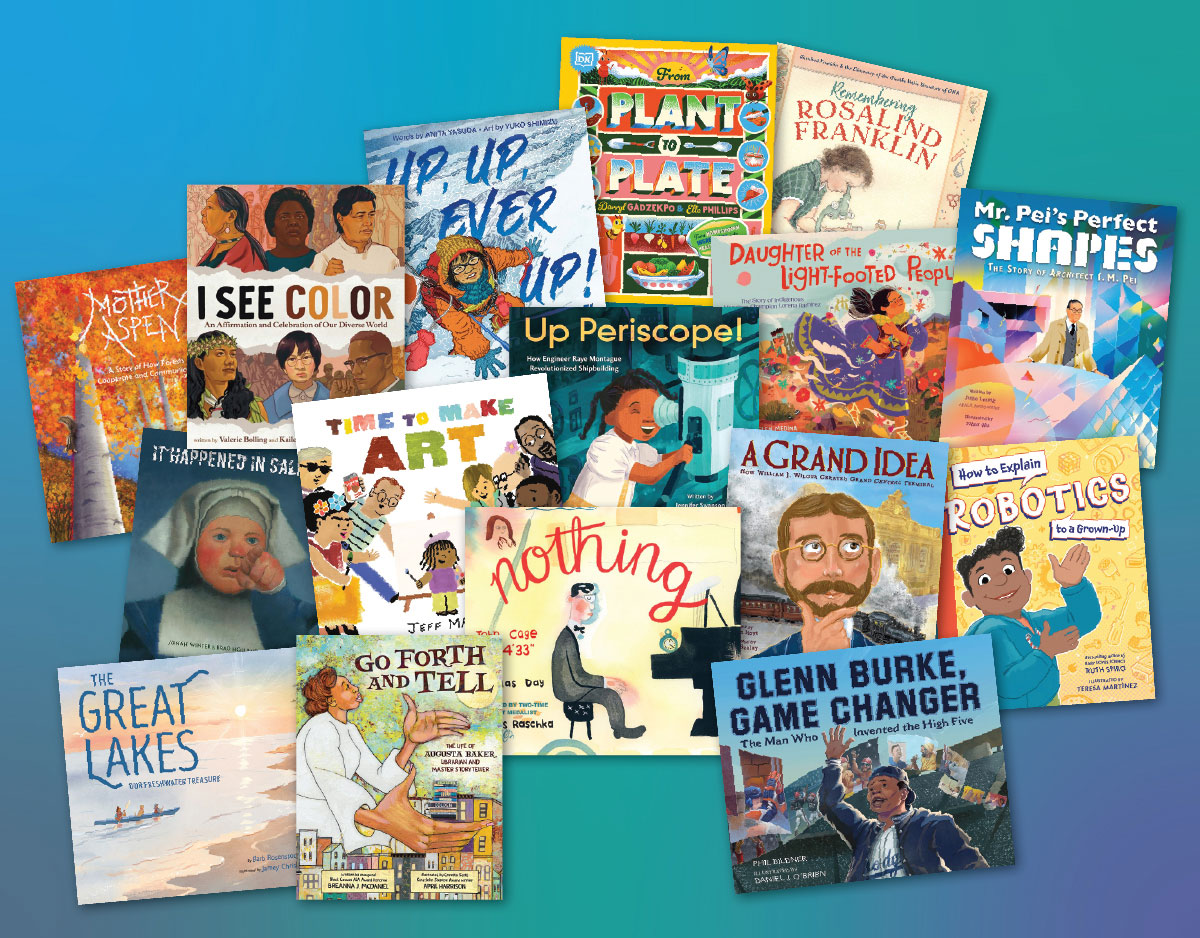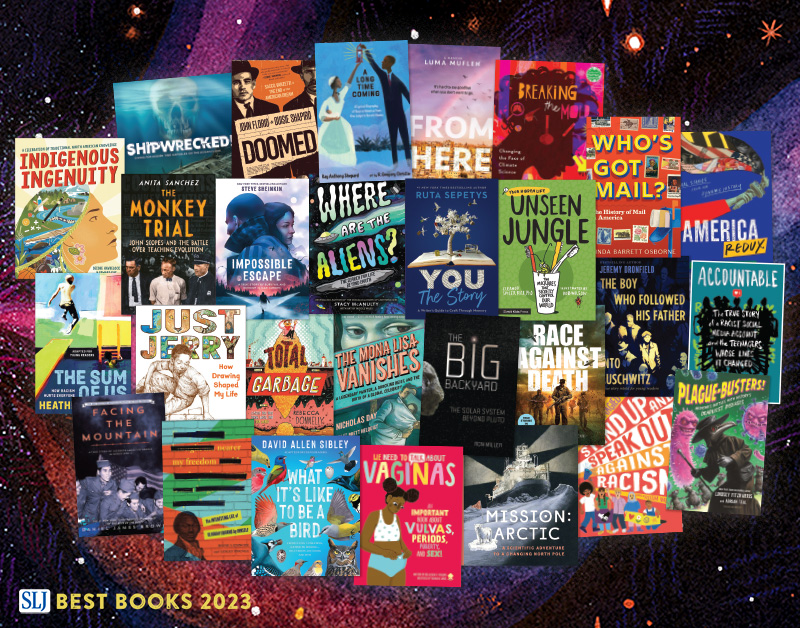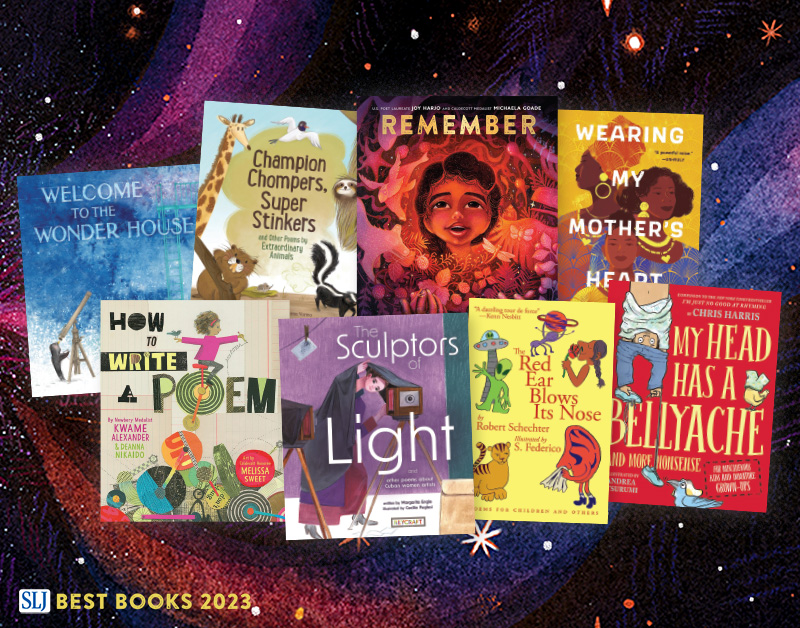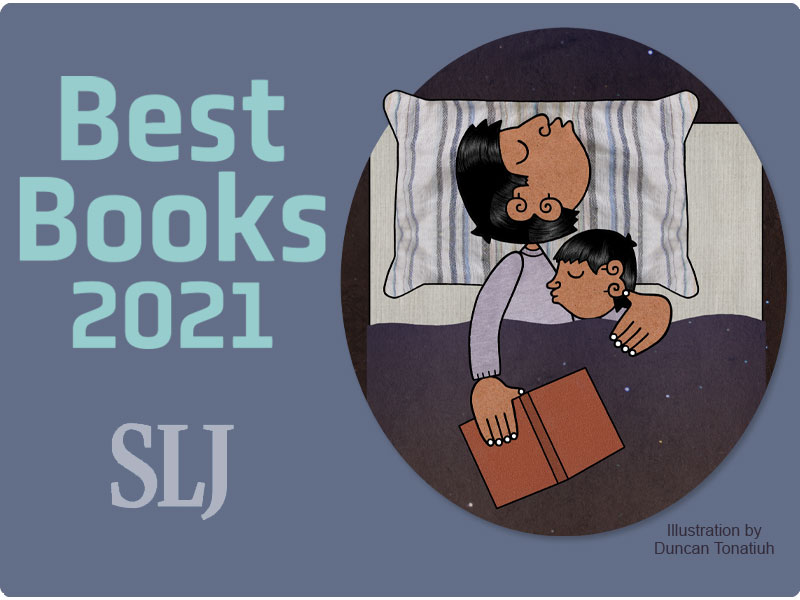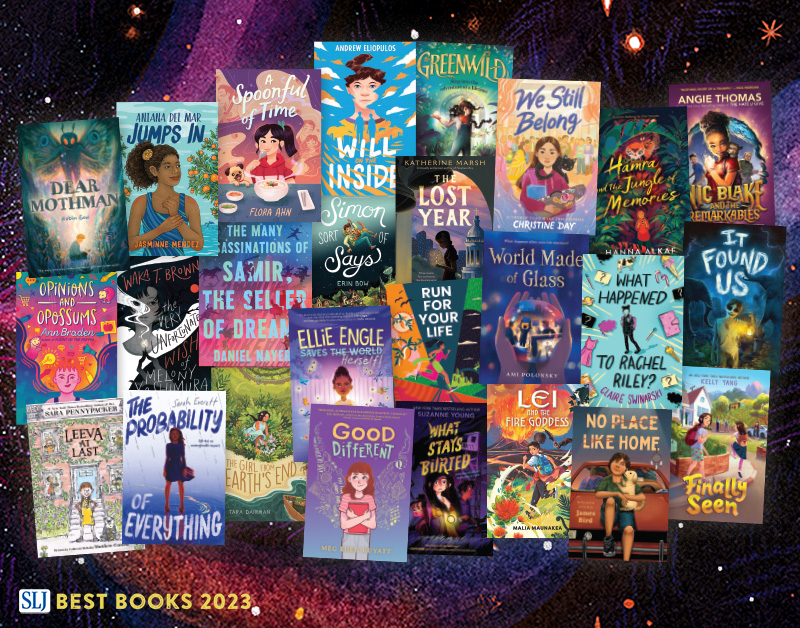Review of the Day: Bea Wolf by Zach Weinersmith, ill. Boulet
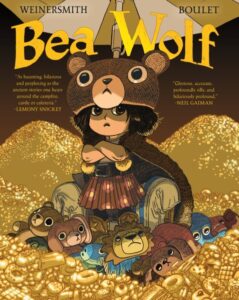
Bea Wolf
By Zach Weinersmith
Art by Boulet
First Second (an imprint of Macmillan)
$19.99
ISBN: 978-1-250-77629-7
Ages 9-12
On shelves now
Okay then. I guess we’re going to do this, and it’s not going to be short.
Let me just front end this entire review with a succinct statement for those of you enamored of brevity: I adore this book. Mind, if you’re a fan of brevity, this is probably not the book for you. Who this book actually is for is going to be the crux of our little talk here today, and I invite you to offer your own thoughts, opinions, what have you. An unconventional review for an unconventional book, let’s say. That’s a good term, isn’t it? “Unconventional”. Much nicer than “weird” or “peculiar”. Less judge-y. Once or twice a year I’ll encounter a truly unconventional title that has somehow found itself in the children’s literary book market. These are books that stand in grand defiance of conventional attitudes, opinions, or even basic cataloging. And while they cause folks to tear at their hair in frustration over where to slot them, they also end up being some of the most creative titles on the market. It’s why they’re so rare. There is nothing overly marketable about Bea Wolf by Zach Weinersmith and Boulet, aside from the shiny gold font they put on the book jacket’s cover (a ruse if ever I saw one). It’s high-end. Lofty in its ambitions and artistic renderings. Too old for some, too young for others. It is also, and I mean this truly, strangely perfect in its perfect strangeness. It’ll suffer for that, but if it finds the right audience, maybe it won’t even mind.
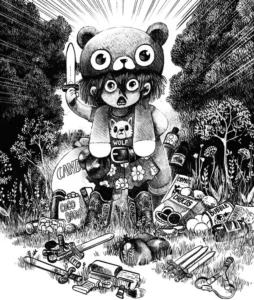
“Listen to the lives of the long-ago kids, the world-fighters,
The parent-unminding kids, the improper, the politeness-proof,
The unbowed bully-crushers, the bedtime-breakers, the raspberry-blowers,
Fighters of fun-killers, fearing nothing, fated for fame.”
So it is that we hear the tale of King Carl, who shared his hoard with the other kids and grew himself a mighty kid nation. When he aged out, his crown was passed on until it finally fell to Roger. Under his reign he had built a mighty treehouse base called Treeheart. But down below lay the middle-aged Grindle. An enemy of fun, Grindle’s mere touch could cause the young to become old “fog-eyed and furrow-faced.” One night he attacks Treeheart, and the kids are turned old before their time. Roger tries to rebuild but a second attack is even worse. Then a hero emerges. A hero named . . . Bea Wolf!
ADVERTISEMENT
ADVERTISEMENT
Zach Weinersmith is a man who loves the original Beowulf. I didn’t have to read his extended note at the end of the book to understand that. I did, however, appreciate its history of the original story as well as its explanation of how a modernization would need to entail certain poetic elements. The short separated lines of the original have been done away with for practical purposes but the alliteration (of which the man is now officially our designated god and king and you will refer to him as such from here on in) and pauses between half lines remain. I can actually pinpoint the exact moment that I fell deeply in love with this book while reading it. Listen to this passage, and you’ll have a clear cut sense of what Weinersmith is doing:
“Toys were forbidden, fun unfound, no noise past five p.m.
The closest cousin of candy was “cake” crafted of carob.
Lies! Fruit in cake’s clothing! Fibs enfleshed in flour!”

All well and good, but then there’s an actual story to be told as well. Here, Weinersmith preserves all the deviations and side quests of the original. Keeping the narrative going while also telling of different adventures is tricky, but since the overarching storyline involving Grindle is the most compelling, you don’t have a hard time returning to it. Bear in mind, too, that this book only goes so far as to show the defeat of Grindle. It hints at a sequel, and we can hope, but in the meantime there’s a lot to pick apart here.
Now we address the elephant in the room, and I apologize for having to even say this because I’m going to have to now lean heavily on “conventional wisdom” for this next part. I’ll start with a little anecdote. Years ago (2008 or so, perhaps?) a young woman by the name of Raina Telgemeier came to prominence. Raina was a promising young cartoonist and had penned something rather keen: a graphic novel memoir for the middle grade reader set. What neither she, nor anyone else, could have predicted was the degree to which Smile (the memoir in question) would balloon into a bestseller. Suddenly children’s librarians like myself were inundated with screaming hordes of newly minted Telgemeier fans (Telgemites? Telgemaniacs?). They demanded that we produce more Raina and forthwith. Fortunately, we had an ace up our sleeve: The Baby-Sitter’s Club. This ancient 80s book series had been adapted into contemporary comics by none other than Raina herself. So with great self-satisfaction we produced the books and handed them over, only to watch as our young patrons’ faces lost all their sparkle after flipping a few pages. “Do you have it in color?” they asked. And by gum, most of them just politely put the books on the reference desk and wandered away. Such is the power of color in a comic.
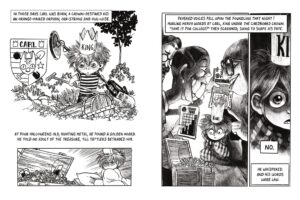
Fast forward to today and to Bea Wolf. You cannot say that its publisher, First Second, is unaware of contemporary child preferences. Nor can you say that kids today like black and white any better than they did at the cusp of the Telgemeiering of America. Yet here we are with a book, ostensibly for kids, illustrated beautifully on an iPad Pro with Procreate (“and a few retakes on PC with Photoshop CC”) in pure black and white. This is a deliberate decision and has nothing to do with the book prostrating itself on the altar of children’s preferences (a bit ironic considering the subject matter). Had the publisher been so inclined, they could have gone with the standard (and cheapest) method of tackling this kind of a book: throw one color in there. Truly, from Babymouse to Nathan Hale’s Hazardous Tales the one-color solution really does make kids feel like they’re not reading a vintage weekday newspaper from the 30s. I imagine that spot of gold on the cover would have served nicely inside, but no! Not today! The art of Boulet is key here and so black and white the book shall remain. And Grindle take the consequences.
Truly, the art in this book really is magnificent. A tour de force. Though Boulet has worked with Lewis Trondheim and Joann Sfar over the years, I was unaware of his existence entirely. A cursory glance at his webcomic site wouldn’t really give you a clear sense of the sheer scope of this project either. And how did he come to this? From the extensive author’s note at the end, you’ve a very clear sense of Mr. Weinersmith’s connection to the material. But while the author toiled over getting individual cadences pitch perfect, Boulet comes at this book from an entirely different angle. His dedication at the start reads, “For my parents, who raised seven kids and know a lot about noise and chaos.” That’s his in. To this book Boulet brings childhood chaos. He fills these pages, and has so much fun in doing so that you’re just swept along. Battles, when they are waged are WAGED! The whole endeavor hits you like a frantic sugar rush of intense linework and incredible shading. It’s impossible to describe, to be perfectly honest. All that I can say is that I cannot for the life of me imagine another artist accompanying this project.
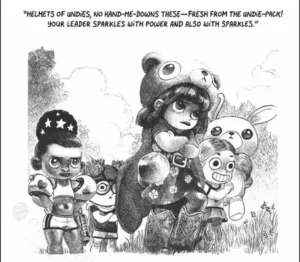
So is it for kids? Yes and no. It’s for some kids. It is not for all kids. Not by a long shot.
Look, if you have a kid that needs cotton candy colors and only the most basic of syllables to amuse them, I’d suggest that a grown-up try reading this to them rather than just lofting it at their heads and hope they take to it. The kid-friendly elements are here right from the start, but that language? It’s meant to be read out loud. You can do it in your head, but for it to entrance it needs to be said into the air. As a result, this may, for a lot of kids, be a bedtime book. I’ll be trying it out on my own 9-year-old son soon. Of course there are also the kids that luxuriate in beautiful language. They won’t need any hand holding. For that certain kind of kid, this will become a Beowulf gateway drug. And for all kids, the images you see in this book will embed themselves in the corners of their craniums for all time. They’ll be 105 in their beds someday and suddenly wake with an image of the hair on King Carl’s upper lip. I deem it to be so.
I have never liked Peter Pan. I’ve nothing against books or stories that celebrate the joy of childhood, but I find its unnatural lengthening to be unnerving. Even so, when a book can celebrate that feeling you get from being a kid, with all the messiness and mud intact, I respect that. Plus, Peter Pan was all about staying a kid forever. This book? About keeping out the adults that would make it end too soon. It’s badass. It’s beautifully rendered. And it’s doing everything it can to keep librarians like myself from forcing it into any pre-made holes or categories. One of the best books you’ll ever read, and I don’t care if you’re a kid or an adult when I say that. Attend the tale.
On shelves now.
Source: Final copy sent by publisher for review.
Filed under: Best Books, Best Books of 2023, Reviews, Reviews 2023
About Betsy Bird
Betsy Bird is currently the Collection Development Manager of the Evanston Public Library system and a former Materials Specialist for New York Public Library. She has served on Newbery, written for Horn Book, and has done other lovely little things that she'd love to tell you about but that she's sure you'd find more interesting to hear of in person. Her opinions are her own and do not reflect those of EPL, SLJ, or any of the other acronyms you might be able to name. Follow her on Twitter: @fuseeight.
ADVERTISEMENT
ADVERTISEMENT
SLJ Blog Network
One Star Review, Guess Who? (#211)
Kevin McCloskey on ‘Lefty’ | Review and Drawn Response
Notable NON-Newbery Winners: Waiting for Gold?
The Seven Bills That Will Safeguard the Future of School Librarianship
Take Five: Newbery Picks, Part Two
Gayle Forman Visits The Yarn!
ADVERTISEMENT



